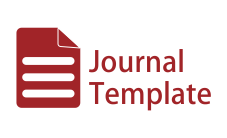Submission Guide — JIEMB
Step-by-step instructions & manuscript requirements
Steps for submitting manuscripts
-
1
Register as an Author
Register on the User Registration page and ensure you select the Author role.
-
2
Start a New Submission
After login as an Author, click New Submission and proceed through the five stages.
-
3
Submission Workflow (5 Stages)
The submission process consists of:
- Start: Check all checklists, then click Save & Continue.
- Upload Submission: Upload manuscript file in MS Word format, then Save & Continue.
- Enter Metadata: Add all authors & affiliations; for additional authors click Add Author. Fill title, abstract, keywords, methods, bibliography.
- Upload Supplementary Files: Optional support docs (cover letter, appendices).
- Confirmation: Verify everything and click Finish Submission.
General Instructions
- Format manuscripts following the APA Publication Manual (6th ed.). Use reference managers (Mendeley/Zotero). See: APA Manual and BibMe APA Guide.
- Manuscripts must be original and not previously published. During review/editing or after publication, the manuscript must not be submitted to another journal.
- Manuscripts must be written in Arial Nova, 11pt, line spacing 1.15, page size B5 (182 × 257 mm). Target length: 4,000–8,000 words including figures and tables. Template: Download template.
- Manuscripts may be in Indonesian or American English. Maintain consistency (American or British English). English manuscripts typically use past tense. Use consistent fonts throughout — e.g., Calibri for abstracts, Arial Nova for body text.
Particular Instructions
The article must be empirical or theoretical research in Islamic economics, management, or business. Because of blind review, do not include author names, institutions, or emails in the manuscript. Provide author identity and contact information only in OJS registration (include active mobile number).
Structure (narrative format, avoid numbering subheadings):
- Title — concise, bold, Arial Black 14pt, centered (first word capitalized).
- Abstract — bilingual (EN & ID), single-spaced paragraph, include: background; purpose; methodology; results; implications. Use Calibri 10pt, justified.
- Keywords — 3–5 keywords, semicolon-separated, Calibri 10pt.
- Introduction — background, significance, literature gap, objectives/hypotheses. Arial Nova 11pt, 1.15 spacing.
- Literature review — relevant theories/frameworks, critical evaluation.
- Research methods — design, data, sampling, instruments, analysis, limitations.
- Results & discussion — present findings and interpret them relative to prior studies.
- Conclusion — summarize contributions, implications, and actionable suggestions for future research.
- References — APA 6th ed., alphabetically, include DOI if available. Prefer references within the last 10 years.
Note:
- Use reference managers (Mendeley / Zotero) to ensure citation consistency.
- Arabic words should be transliterated according to The International Journal of Middle East Studies (IJMES) transliteration system. Authors should ensure consistency in applying the IJMES transliteration system throughout their manuscript. download IJMES
Example References
- Book: Antonio, M. S. (2001). Bank Syariah: Dari Teori ke Praktik. Jakarta: Gema Insani Press.
- Book chapter: Kahf, M. (2014). Riba in Islamic economics and finance. In M. K. Hassan & M. K. Lewis (Eds.), Handbook on Islam and Economic Life (pp.132–152). Edward Elgar.
- Journal paper: Biancone, P. P., & Radwan, M. (2019). Social Finance... European Journal of Islamic Finance, 2(1), 1–7. https://doi.org/10.13135/2421-2172/3176.
- Website: Baznas. (2020). BAZNAS: Zakat... Retrieved from https://baznas.go.id/...
- Thesis: Demuth, F. (2016). An Islamic Economy based on Rizq... Doctoral Thesis, Durham University. Retrieved from http://etheses.dur.ac.uk/11913/.


